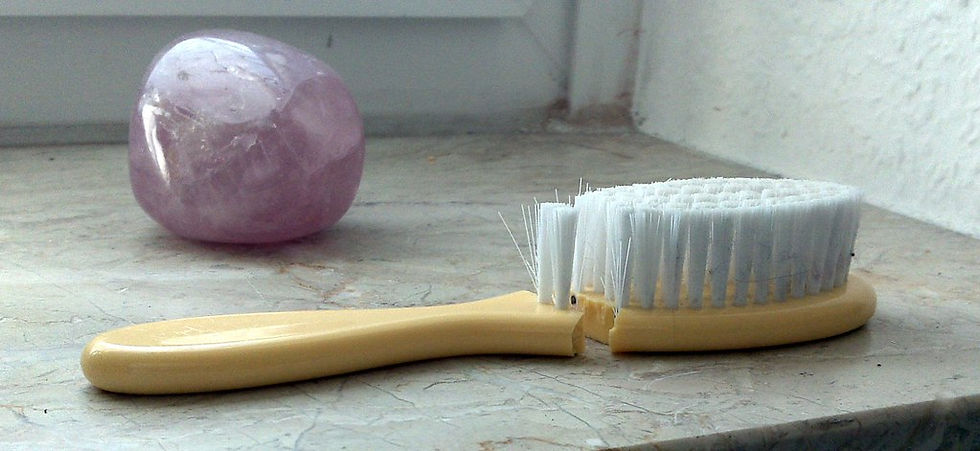What is Wabi Sabi and how can it help you to be more sustainable [5 easy tips]
- Ksenia Koroleva

- Mar 31, 2020
- 2 min read
Updated: Jun 28, 2020
Are you a perfectionist? At least sometimes? At work? At home?
If you come from the Western world chances are that you are. The modern European cultures were strongly influenced by the expansion of the Roman Empire way before America was discovered and that the European colonists imported their world views to the new continent.
The Roman artists and scientists admired symmetry, harmony and mathematical perfection of any of their physical or mental creations. The Western world was born and developed on this vision. Japan ("Japan" article on Wikipedia) though took quite a different path to seek beauty around.
Example of a Roman temple in Nîmes (France) :
What is Wabi Sabi?
Wabi Sabi ("Wabi Sabi" article on Wikipedia) is a Japanese art of seeing beauty in imperfect things: a broken glass, an old house, a used wooden or stone surface. The Wabi Sabi aesthetics invite the observer to think about the impermanence and the constant change of each existing matter.

How can Wabi Sabi help you being more sustainable?
Many of us (and I'm the first guilty!) want things around us to be perfect: a perfect jacket, a perfect t-shirt, a perfect lipstick, a perfect lamp, dishes, chairs and the list goes on. We buy new things to replace the "old" ones just because of their style, not because they are broken or impossible to use or we buy it because of how they can impress people we want to impress.
So, here are some teachings that we can take from Wabi Sabi and apply to our lives to make them more sustainable:
1. Keep using what's broken. Quite often we can continue using broken things without searching to replace them by the new ones.

2. Re-use a broken thing with a different purpose. A broken plant pot can become a miniature garden:

3. If you really need to buy something, buy second-hand. You can find almost everything in second hand stores and often, even though the items can be a little used, they are of a better quality then the modern equivalents.
Check out my first article with some tips on how to find your perfect vintage store here: "How To Find Your Perfect Vintage Store. Article by VNTG".
4. Repair. Sometimes a beautifully repaired thing is even more stylish than a new one.
A Wabi Sabi ball:

5. Embrace your natural beauty. This tip is addresses especially women whom the modern society and, especially, global marketing campaigns make believe that they always need new makeup items or special skin products to look better.
You are not perfect, nobody is! But our imperfections make us unique and authentic!
Just check out # bareface on Instagram!
And here is a great video from Alyse (who has an amazing Youtube channel, by the way):
In conclusion
It's always interesting to learn about cultures and traditions that we are not familiar with and by doing it everyone develops the own creativity and apply the new knowledge to his/her life and habits.
Discovering new ways of living makes us richer and, very often the most valuable truth is the simplest one.
And you? Which tips from other cultures have you imported into your life?
Please comment and share with us, we will be happy to hear from you!


![5 best fashion bloggers who buy in vintage shops [summer 2020]](https://static.wixstatic.com/media/ab4d97_5e30d25c9baa4fd39361e066abcf059d~mv2.png/v1/fill/w_800,h_1200,al_c,q_90,enc_avif,quality_auto/ab4d97_5e30d25c9baa4fd39361e066abcf059d~mv2.png)
![6 tips to shop in a second hand clothing store [best second hand shopping tips for 2020]](https://static.wixstatic.com/media/ab4d97_fb55dd88494a4c27847a31caf18985cb~mv2.png/v1/fill/w_800,h_1200,al_c,q_90,enc_avif,quality_auto/ab4d97_fb55dd88494a4c27847a31caf18985cb~mv2.png)
![The 5 second best second hand stores in Tel Aviv in 2020 [part 2 of the full guide]](https://static.wixstatic.com/media/ab4d97_2e734a2af57d4dcf96c35d78d2059cfc~mv2.png/v1/fill/w_800,h_1200,al_c,q_90,enc_avif,quality_auto/ab4d97_2e734a2af57d4dcf96c35d78d2059cfc~mv2.png)
Comments